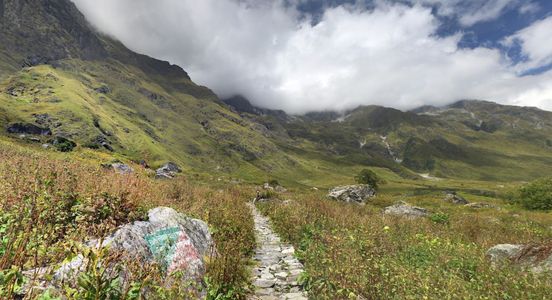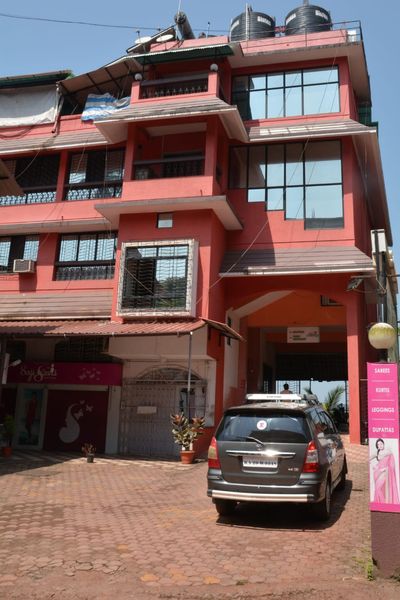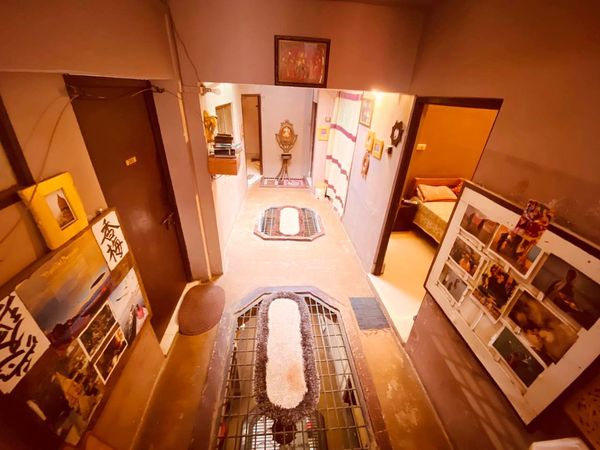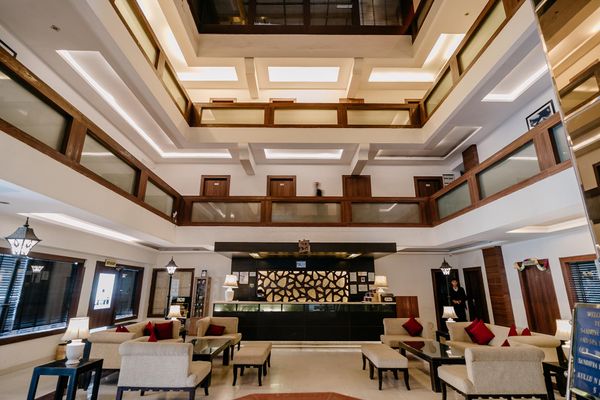Weather Challenges and How to Tackle Them on the Valley of Flowers Trek
 Ankit Rawat
22 Jul, 2025
9 mins read
84
Ankit Rawat
22 Jul, 2025
9 mins read
84

The Valley of Flowers trek in Uttarakhand is one of the most beautiful and scenic treks in India. This UNESCO World Heritage Site attracts thousands of nature lovers and trekkers every year. While the valley blooms with colorful flowers between July and September, the changing weather conditions in the region can bring challenges for even experienced trekkers. Knowing what to expect and how to handle the weather can make your trek safer and more enjoyable.
Understanding the Weather in the Valley of Flowers
The Valley of Flowers is located at an altitude of about 12,000 feet above sea level. The weather here can change quickly and may not always follow forecasts. Due to its height and location in the Himalayas, temperatures can drop suddenly, rain can pour without warning, and fog can reduce visibility. Understanding these conditions is key before you plan your journey.
The Valley of Flowers trek takes you through varying altitudes and landscapes, which means you will experience different weather patterns within a single day. Clear skies in the morning can turn into rainy afternoons, and sunny trails can quickly become wet and cold. Being aware of these changes helps you stay prepared at every step.
Monsoon Season
The best time to visit the Valley of Flowers is between July and September. This is also the monsoon season in Uttarakhand. The monsoon brings the valley to life with blooming flowers, green meadows, and flowing streams. But it also brings regular rain, slippery trails, and the risk of landslides on the way.
Cold Mornings and Evenings
Even during the summer months, mornings and evenings can be quite cold. Temperatures can go below 5°C during the night. If you're not prepared with the right clothes, this sudden cold can lead to discomfort and even health issues like hypothermia.
Fog and Low Visibility
Fog is another weather condition that trekkers must be aware of. The valley can get covered with thick fog, especially in the morning or late afternoon. This reduces visibility and makes it harder to walk on narrow trails. It can also hide beautiful views that trekkers come to see.
Challenges Caused by the Weather
Weather in the Valley of Flowers affects the trek in many ways. Here are the common problems trekkers face and how you can prepare for them.
Slippery Trails
Heavy rain makes the paths muddy and slippery. This is risky, especially on the steep parts of the trail. Slipping can lead to sprains, injuries, or worse. It also slows down your pace and makes the trek more tiring.
Landslides
On the way from Govindghat to Ghangaria and beyond, landslides are a real danger during the monsoon. Roads may get blocked or washed away, causing delays or even cancellations. It is important to check weather and road updates before you start.
Wet Clothes and Gear
Walking in the rain without proper gear can leave your clothes, shoes, and bags wet. Wet clothes can lead to discomfort, colds, and infections. They also add weight to your bag. Keeping your gear dry is one of the most important things to focus on.
Altitude Sickness
The weather alone is not the only concern. As you go higher, the oxygen levels drop. Many trekkers experience symptoms of altitude sickness like headache, dizziness, and shortness of breath. Cold weather can make this worse, especially if your body is not fully adjusted.
How to Tackle Weather Challenges
With the right planning and preparation, most of these challenges can be handled safely. Here are some important tips to deal with the Valley of Flowers weather.
Check the Forecast Before You Go
Before your trek, keep a close watch on the local weather forecast. Make sure to check the weather for Govindghat, Ghangaria, and the Valley of Flowers itself. If heavy rain is predicted, consider changing your dates or waiting for clearer conditions.
Dress in Layers
Wearing layers helps your body adjust to changing temperatures. A good setup includes a base layer to absorb sweat, an insulating layer to keep warm, and a waterproof outer layer to protect from rain. Always carry a raincoat or a poncho in your daypack.
Wear Proper Trekking Shoes
Shoes with good grip are a must for this trek. Make sure your shoes are waterproof and broken in before you start. Avoid using brand new shoes on the trek. Carry an extra pair of socks and sandals to change into if your shoes get wet.
Use a Waterproof Backpack Cover
A backpack cover is useful to protect your bag from getting wet. You can also use plastic bags inside your backpack to keep clothes and gear dry. Pack important items like your phone, wallet, and medicines in waterproof pouches.
Stay Hydrated and Eat Well
Even in cold and wet conditions, drink enough water to stay hydrated. Carry ORS or glucose powder to keep your energy levels up. Eat small meals often and avoid junk food during the trek.
Start Early in the Day
Weather conditions are usually better in the early hours. Try to start your trek early each morning and reach your destination by afternoon. This way, you avoid walking in the rain, fog, or cold.
Acclimatize Properly
Give your body time to adjust to the altitude. Spend a day in Ghangaria before entering the Valley of Flowers. Walk slowly, take deep breaths, and do not rush. If you feel dizzy or tired, rest for a while and inform your guide or group.
Carry a First Aid Kit
A small but complete first aid kit is important. Include medicines for cold, fever, stomach issues, and altitude sickness. Carry bandages, antiseptic cream, and pain relief sprays in case of injury.
Travel with a Guide or Group
If you are new to trekking, it is safer to travel with a local guide or join a trekking group. Guides know the weather patterns and trails better. They can help you avoid risky areas and offer support in case of emergencies.
Final Thoughts
The Valley of Flowers trek is a rewarding journey that shows you the beauty of the Himalayas in full bloom. However, its high altitude and changing weather can bring many challenges. By preparing well, staying alert, and respecting nature, you can enjoy the trek without trouble. Always listen to your body, follow safety rules, and never underestimate the power of weather in the mountains.
Pack smart, stay dry, and enjoy the adventure.
Written By:
Ankit Rawat



Hotels at your convenience
Now choose your stay according to your preference. From finding a place for your dream destination or a mere weekend getaway to business accommodations or brief stay, we have got you covered. Explore hotels as per your mood.


